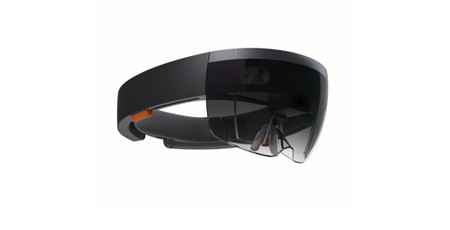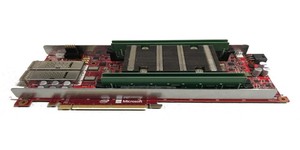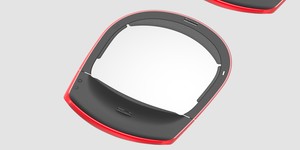Microsoft adds AI acceleration to HPU chips
July 24, 2017 | 11:34
Companies: #google #intel #microsoft #movidius

Microsoft has announced that its next-generation Holographic Processing Unit (HPU), the custom chip that powers its HoloLens augmented reality headset, is to feature an integrated co-processor for artificial intelligence (AI) workloads.
Announced in January 2015 during the Windows 10 unveiling, the HoloLens is a self-contained, battery-powered Windows PC in a translucent visor system. Rather than the more common virtual reality platforms, HoloLens is an augmented reality system which locks floating images within the user's vision - dubbed, inaccurately, 'holograms' by Microsoft - and allows full 3D interaction, albeit in an extremely narrow field of vision.
That Microsoft is splashing the cash on making HoloLens a success is no secret, of course. In May 2015 the company announced the hiring of Casey Hudson to act as creative director of Microsoft Studios and help bring the holographic user interfaces he oversaw during his work as the director of the Mass Effect franchise to reality. Sadly, the company's initially available HoloLens hardware is priced out of the reach of most consumers, costing $3,000 for the Development Edition release - a price that is being brought down by hardware partners working on third-party lower-specification headsets based on the same Windows Mixed Reality platform.
Now, the company has confirmed that it is continuing to develop the Holographic Processing Unit (HPU) chip which powers the HoloLens system, teasing an updated version which includes a built-in accelerator for artificial intelligence tasks. 'HoloLens contains a custom multiprocessor called the Holographic Processing Unit, or HPU. It is responsible for processing the information coming from all of the on-board sensors, including Microsoft’s custom time-of-flight depth sensor, head-tracking cameras, the inertial measurement unit (IMU), and the infrared camera,' Microsoft's Marc Pollefeys, director of science at the company's HoloLens division, explained in a blog post this weekend. 'The HPU is part of what makes HoloLens the world’s first–and still only–fully self-contained holographic computer.
'The second version of the HPU, currently under development, will incorporate an AI co-processor to natively and flexibly implement DNNs [Deep Neural Networks]. The chip supports a wide variety of layer types, fully programmable by us. Harry [Shum, executive vice president of Microsoft's AI research group] showed an early spin of the second version of the HPU running live code implementing hand segmentation,' continued Polleyfeys. 'The AI coprocessor is designed to work in the next version of HoloLens, running continuously, off the HoloLens battery. This is just one example of the new capabilities we are developing for HoloLens, and is the kind of thing you can do when you have the willingness and capacity to invest for the long term, as Microsoft has done throughout its history. And this is the kind of thinking you need if you’re going to develop mixed reality devices that are themselves intelligent. Mixed reality and artificial intelligence represent the future of computing, and we’re excited to be advancing this frontier.'
Microsoft is far from the only company investing in custom silicon for AI-related task-acceleration, of course. In May 2016 Google unveiled the Tensor Processing Unit (TPU), designed to accelerate code running on its TensorFlow machine learning platform and at the time already in use at the company's data centres, while Intel has recently launched a USB-connected co-processor for use with the Caffe deep-learning framework through its subsidiary Movidius.
Microsoft is still silent on commercial availability of a non-Developer Edition variant of its HoloLens headset.

MSI MPG Velox 100R Chassis Review
October 14 2021 | 15:04








Want to comment? Please log in.